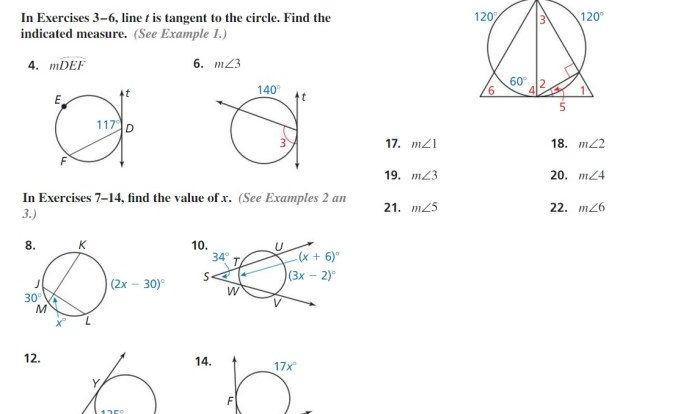Geometry Prentice Hall Textbook PDF introduces readers to the captivating world of geometry, providing a comprehensive overview of its fundamental principles and their applications in various fields. This definitive guide offers a deep dive into the concepts, theorems, transformations, proofs, and coordinate geometry that form the foundation of this fascinating subject.
Through its engaging narrative and detailed explanations, Geometry Prentice Hall Textbook PDF empowers readers to grasp the intricacies of geometry, fostering a deeper understanding of its practical implications in architecture, engineering, art, and computer graphics.
1. Geometry Concepts and Theorems: Geometry Prentice Hall Textbook Pdf
Geometry is the branch of mathematics that deals with the properties and relationships of points, lines, angles, and shapes. It is a fundamental subject that has applications in many fields, including architecture, engineering, art, and computer graphics.
Some of the most important concepts in geometry include:
- Pointsare the basic building blocks of geometry. They have no size or shape, and they are represented by dots.
- Linesare one-dimensional objects that extend infinitely in both directions. They are represented by straight lines.
- Anglesare formed by two rays that share a common endpoint. They are measured in degrees.
- Shapesare two-dimensional objects that have a defined boundary. They can be classified into different types, such as triangles, squares, and circles.
Geometry also includes a number of important theorems, such as the Pythagorean theorem and the angle sum theorem. These theorems can be used to solve a variety of geometric problems.
Applications of Geometry
Geometry has a wide range of applications in the real world. For example, it is used to design and construct buildings, bridges, and other structures. It is also used in art and computer graphics to create realistic images.
2. Geometric Transformations
Geometric transformations are operations that can be performed on shapes to change their size, shape, or orientation. The four basic types of geometric transformations are:
- Translationsmove a shape from one location to another without changing its size or shape.
- Rotationsturn a shape around a fixed point.
- Reflectionsflip a shape over a line.
- Dilationschange the size of a shape.
Geometric transformations are used in a variety of applications, such as computer graphics, animation, and engineering.
Properties of Transformed Shapes, Geometry prentice hall textbook pdf
When a shape is transformed, its properties may change. For example, a translation will change the location of a shape, but it will not change its size or shape. A rotation will change the orientation of a shape, but it will not change its size or shape.
A reflection will change the orientation of a shape and its size.
3. Geometric Proofs

Geometric proofs are used to establish the truth of geometric statements. There are two main types of geometric proofs: deductive proofs and inductive proofs.
Deductive proofsstart with a set of axioms, which are statements that are assumed to be true. The axioms are then used to derive new statements, which are called theorems. Theorems can be used to prove other theorems, and so on.
Inductive proofsstart with a specific case of a statement and then show that the statement is true for all cases. Inductive proofs are not as rigorous as deductive proofs, but they can be used to prove statements that cannot be proven deductively.
Importance of Proofs in Geometry
Proofs are essential in geometry because they allow us to establish the truth of geometric statements. Proofs also help us to understand the relationships between different geometric concepts.
4. Coordinate Geometry
Coordinate geometry is a branch of geometry that uses algebra to represent and solve geometric problems. The Cartesian coordinate system is a two-dimensional coordinate system that is used to represent points on a plane. The x-axis is the horizontal axis, and the y-axis is the vertical axis.
Coordinate geometry can be used to solve a variety of geometric problems, such as finding the distance between two points, finding the area of a triangle, and finding the equation of a line.
Applications of Coordinate Geometry
Coordinate geometry has a wide range of applications in the real world. For example, it is used in navigation, surveying, and computer graphics.
5. Applications of Geometry
Geometry has a wide range of applications in various fields, including:
- Architecture: Geometry is used to design and construct buildings, bridges, and other structures.
- Engineering: Geometry is used to design and build machines, vehicles, and other objects.
- Art: Geometry is used to create paintings, sculptures, and other works of art.
- Computer graphics: Geometry is used to create realistic images and animations.
Geometry is a fundamental subject that has applications in many different fields. It is a valuable tool for understanding the world around us.
Clarifying Questions
What is the scope of Geometry Prentice Hall Textbook PDF?
Geometry Prentice Hall Textbook PDF covers a comprehensive range of topics, including geometry concepts, theorems, transformations, proofs, coordinate geometry, and applications in various fields.
Is Geometry Prentice Hall Textbook PDF suitable for beginners?
Yes, Geometry Prentice Hall Textbook PDF is designed to provide a solid foundation in geometry for beginners, with clear explanations and engaging examples.
How can I access Geometry Prentice Hall Textbook PDF?
Geometry Prentice Hall Textbook PDF can be accessed online through various educational platforms and libraries.

